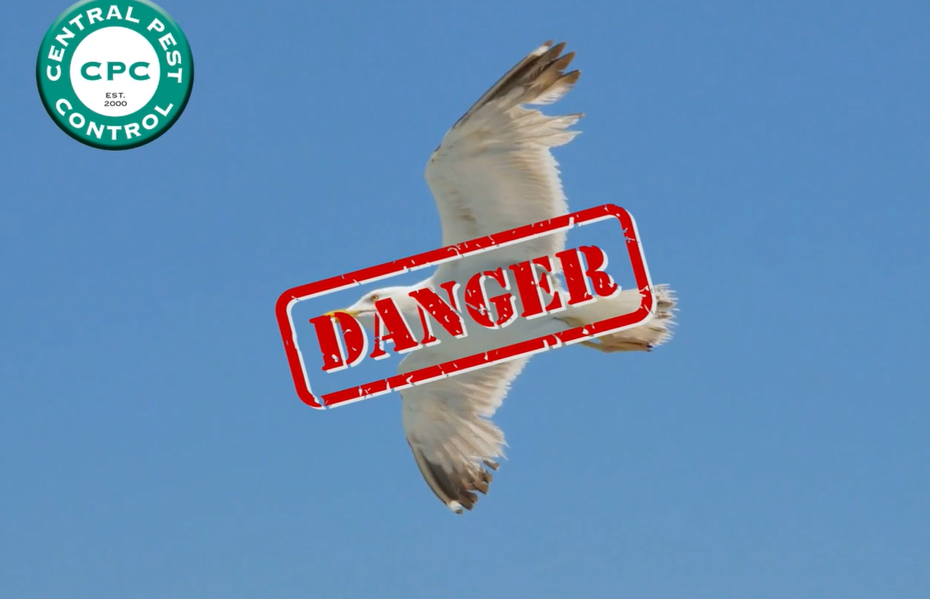
Diseases Seagulls and Pigeons Carry and Spread
Did you know?
Pest birds, their droppings and their nesting materials can carry over 60 diseases and ectoparasites transmittable to humans and animals?
The elderly, young and those with weakened immune systems are most at risk of catching these diseases.
Pest birds can block chimneys, flutes and guttering from their nesting. These blockages can cause issues with carbon monoxide and water overflow from gutters. It is common to find parasites such as mites, ticks, fleas and beetles in their nests. So, if you don’t solve your pigeon or gull problem quick, you may find you might suffer from a parasite infestation too.
Diseases Associated with Pest Birds
Viruses
Bird Flu (avian influenza) is a contagious viral disease of birds. All birds are thought to be susceptible to the virus, and symptoms can vary from mild illness to fatality. There are many different types of the virus.
One of these subtypes, known as H5N1, has caused severe outbreaks in poultry and deaths in humans.
Did you know?
There have been 170 human cases of this virus spread from pest birds reported to the World Health Organization to date, 92 which have died.
It is believed that human infections so far have occurred as a result of direct contact with infected birds. The virus can spread through ingestion or inhalation and can remain viable in droppings for prolonged periods.
Other viruses spread by pest birds:
- Louis Encephalitis – Most Serious Risk
- Western Equine Encephalitis
- Meningitis
- New Castle’s Disease
- H5N1 / Bird Flu
Bacteria
Did you know?
There are more bacterial organisms associated with pest birds that affect human health than all other disease-causing organisms?
Types of bacteria spread by pest birds
- Chlamydiosis – Species most often affected are pigeons and gulls. Humans contract the disease by inhaling bacteria-laden dust.
- Salmonella – Bacteria become airborne with faeces dust in accumulated air intake vents, primarily at restaurants and food processing plants.
- Paratyphoid
- Vibriosis
- Listeriosis
- Pasteurellosis
- coli
Fungi
Contact usually occurs through air handling systems, contaminated clothing and spores become airborne. Species most associated are pigeons, blackbirds and starlings.
- Histoplasmosis – Disseminated histoplasmosis is the result of the organism spreading throughout the body via the bloodstream. Over 30 million people a year are affected, with 10% exhibiting systems. The young, elderly, hospitalized or those with immune system deficiencies are most affected.
- Cryptococcus – like histoplasmosis, but ultimately results in meningitis. It is estimated that 50% of the pigeon population is infected.
- Candidiasis
- Sarcosporidiosis
- Blastomycosis
Ectoparasites
Found on the body or in nesting materials.
- Ticks – common ectoparasite found on birds that carry Lyme disease.
- Bird Mites – birds and bird nests carry bird mites which can infest buildings with available hosts.
- Bed Bugs – often attach themselves to birds and are then transferred to new areas by the birds.
Our employees’ health is very important to us at Central Pest Control. We aim to minimize the risks that could encounter as bird control work is being carried out.
As a precaution all of our staff wear suitable Personal Protective Equipment (PPE) when working with bird infestations, in particular bird droppings removal. For avoiding the risk of infection when working with poultry that it is suspected of having highly pathogenic avian influenza, the Health and Safety Executive (HSE) advocate a minimum level of PPE.


